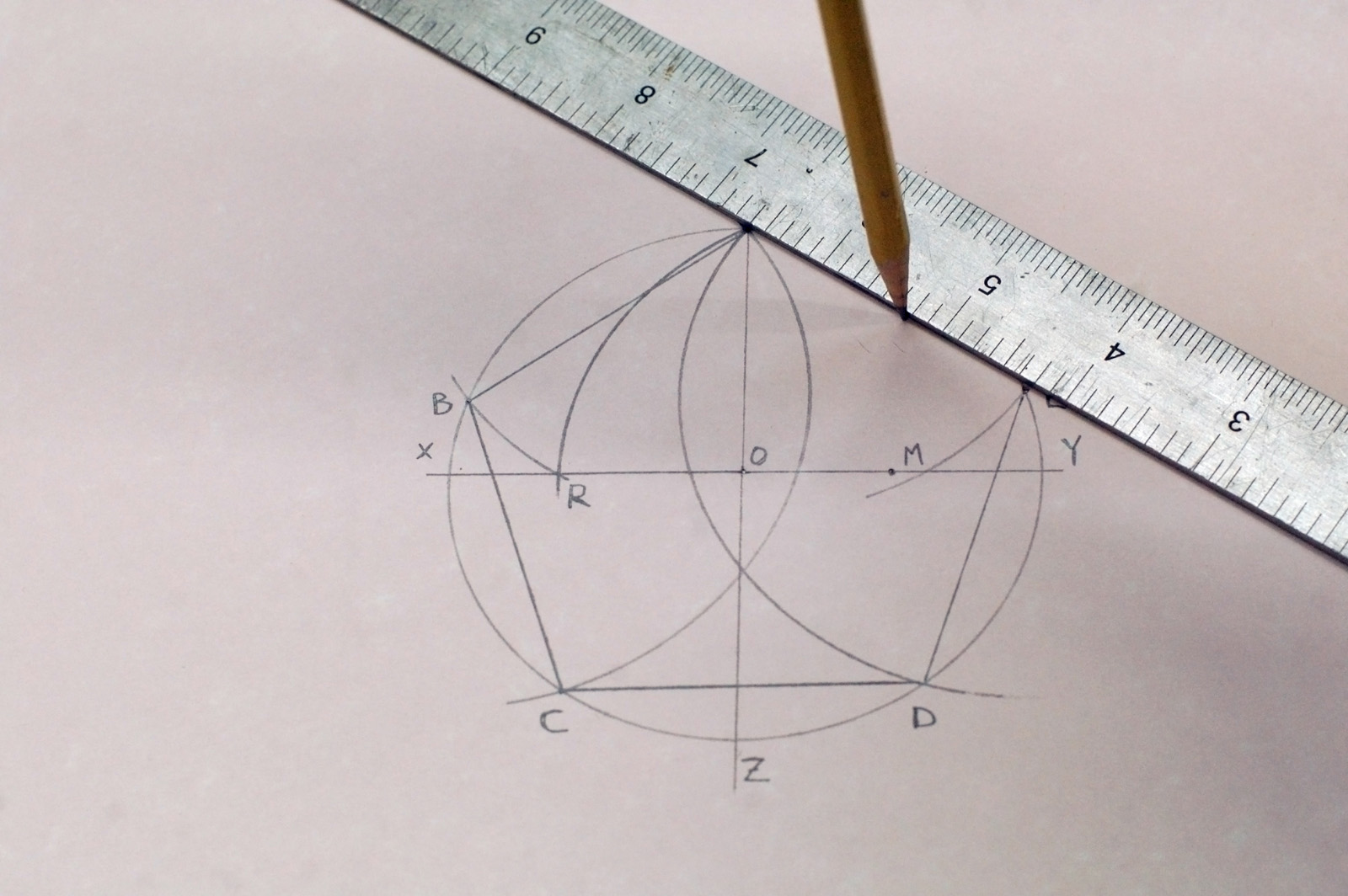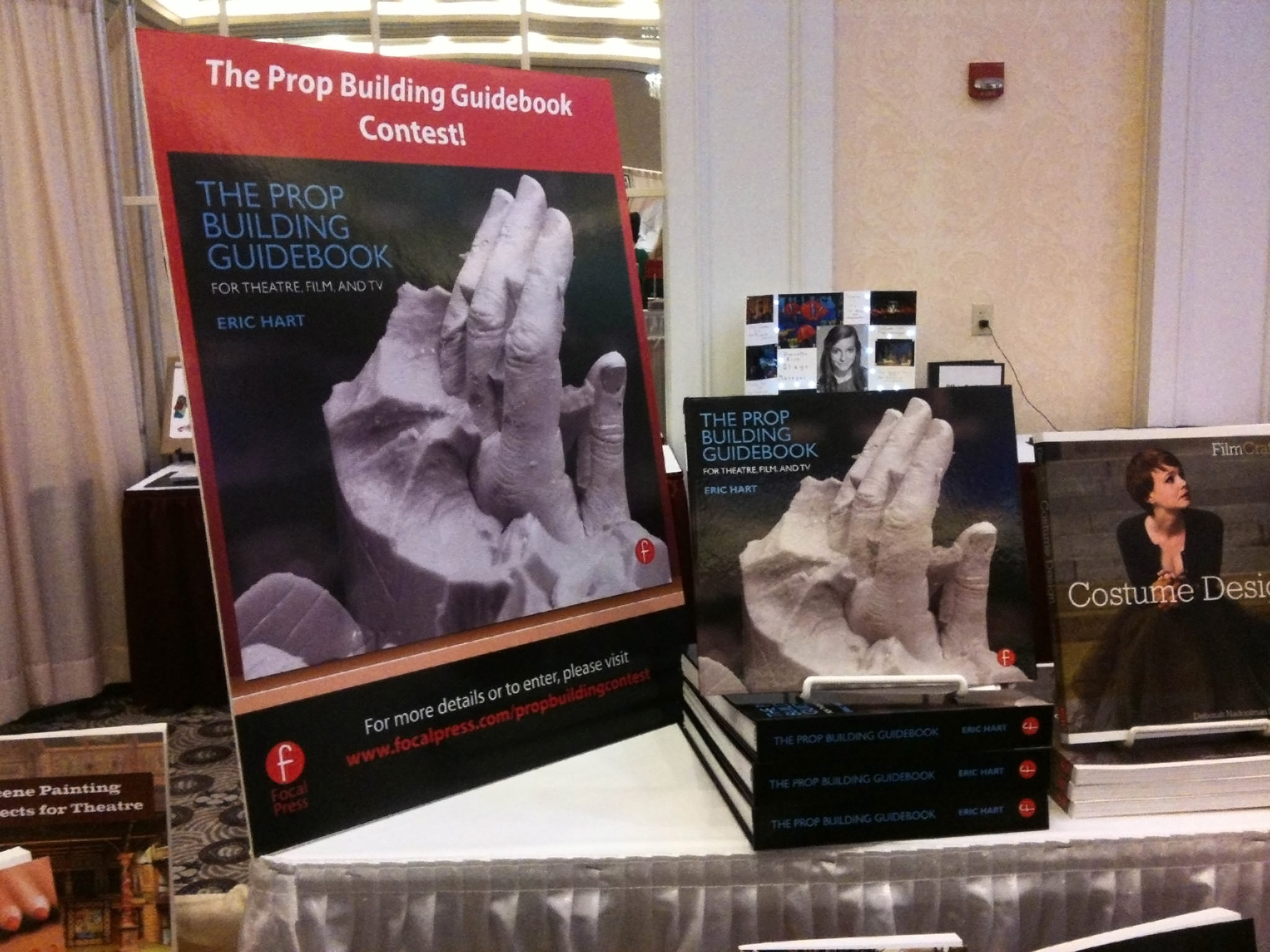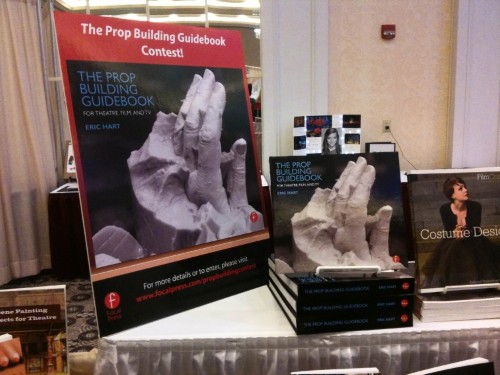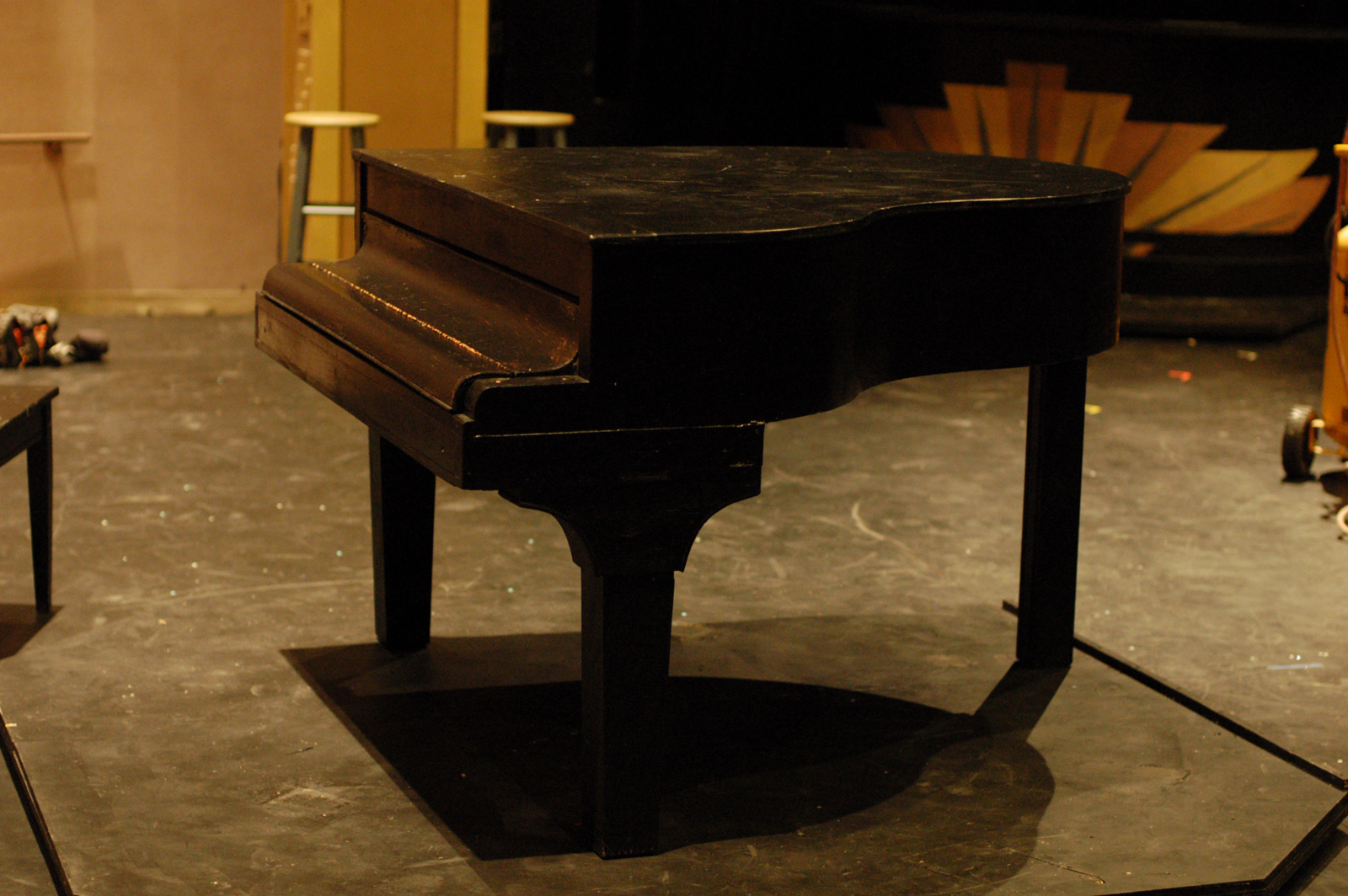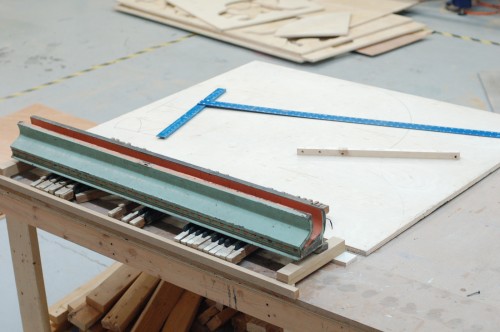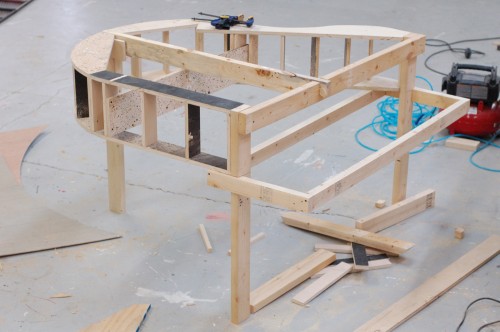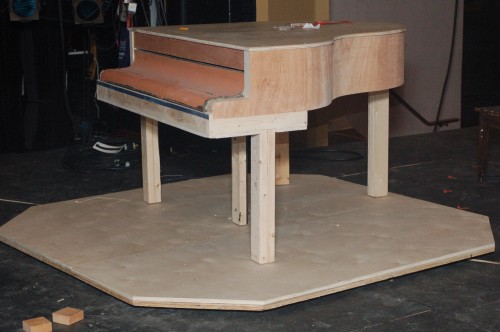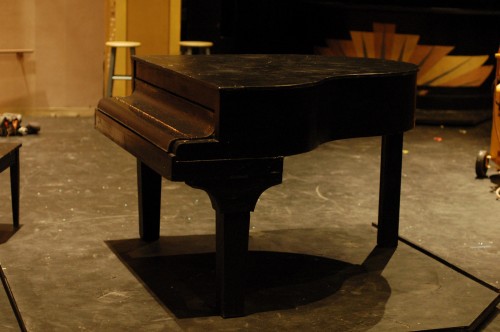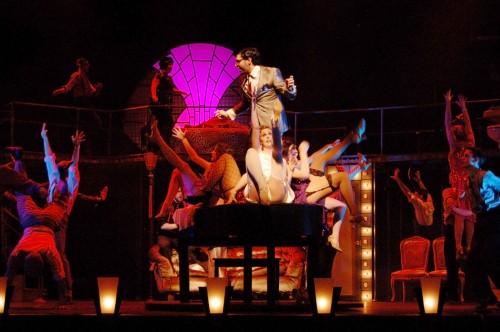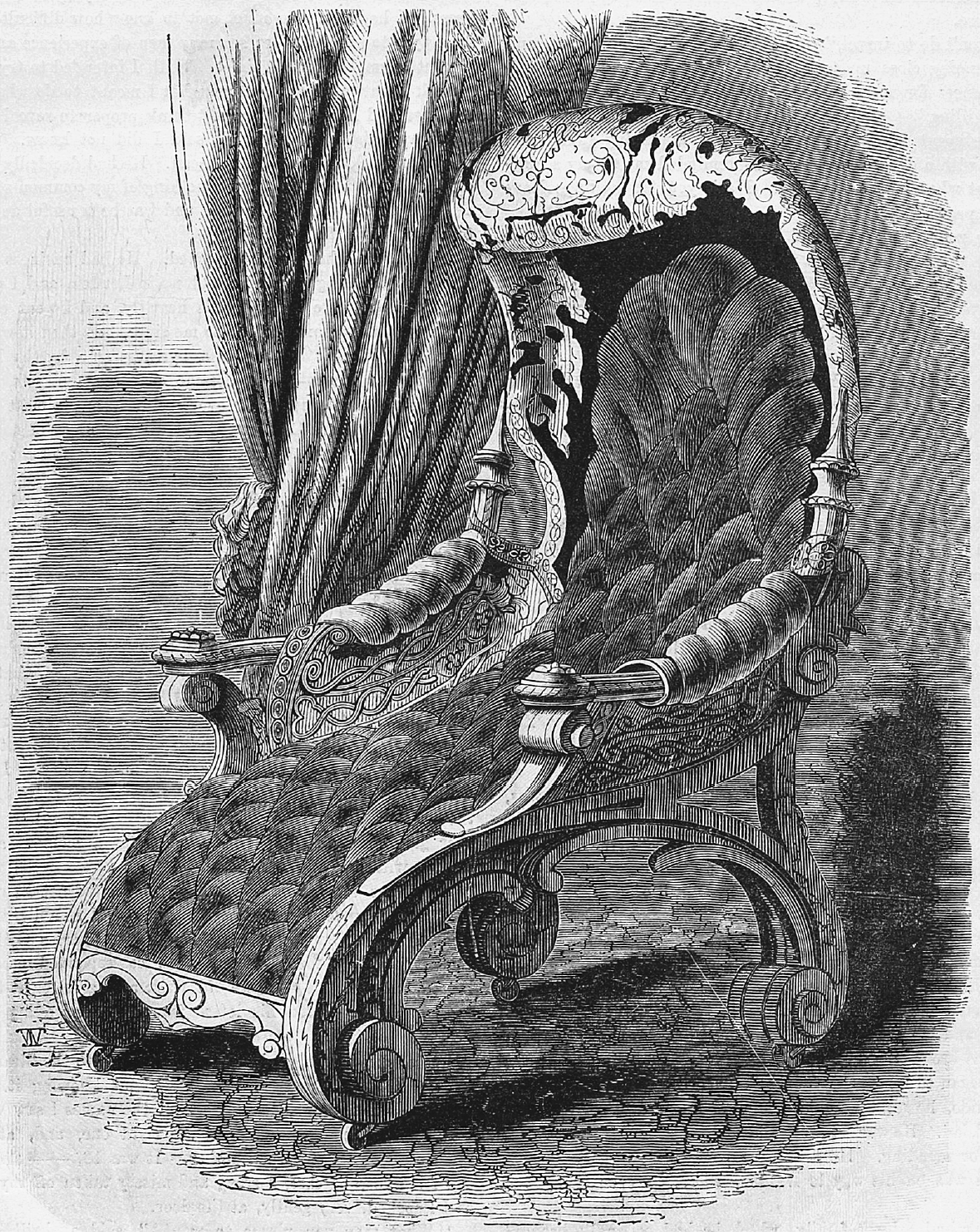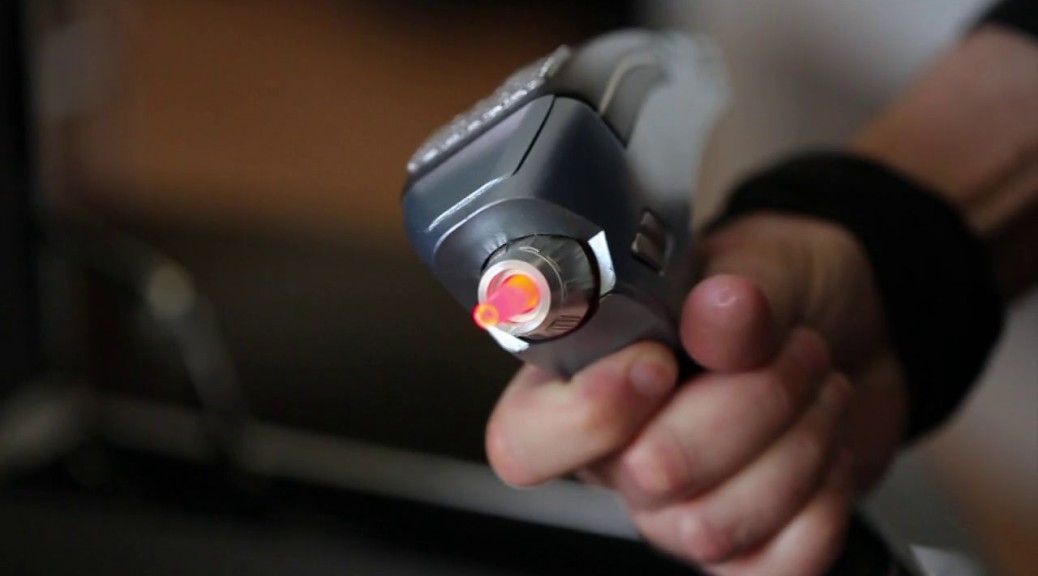A pentagon is a five-sided shape where the sides are equal in length. It can be a useful shape in prop making; it can also serve as the basis for a five-sided star. It may be difficult to lay out with standard drafting tools, but with the method below, you can draw one with just a compass and a straight-edge.
Start off with a circle of a size that will perfectly fit your pentagon; that is, each corner of your pentagon will touch the outside of your circle.
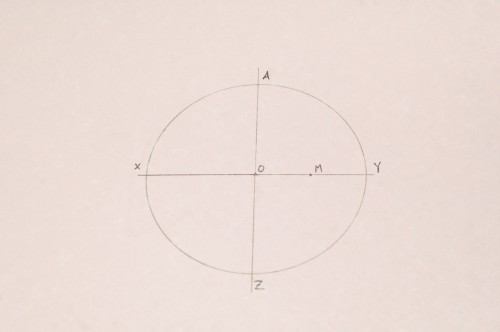
In my circle, I have drawn two perpendicular lines which run through the center point O. Where they cross the circle, I have labeled A, X, Y and Z (A will be the top point of the pentagon, so place it accordingly).
I have bisected line OY to find point M; that is, M is exactly halfway between O and Y.
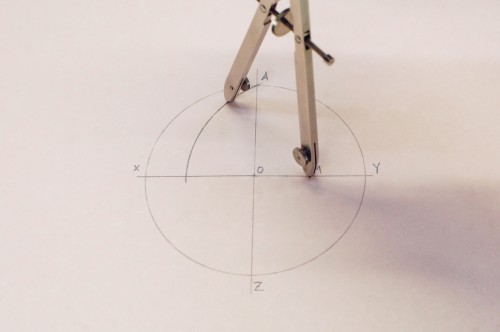
Put the point of the compass on M and extend it so the pencil touches A. Draw an arc that crosses line XO; we will call this intersection “R”.
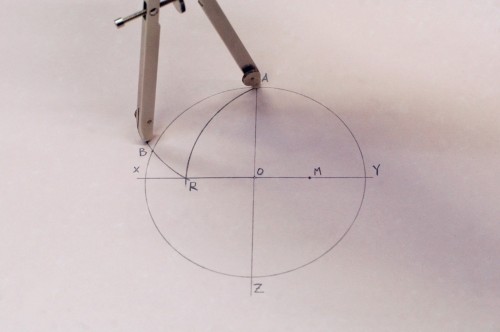
Move the point of the compass onto A and extend it so the pencil now touches R. The radius of your compass is now equal to the length of the sides of your pentagram. When you draw an arc from R to your circle, you will find point “B”.
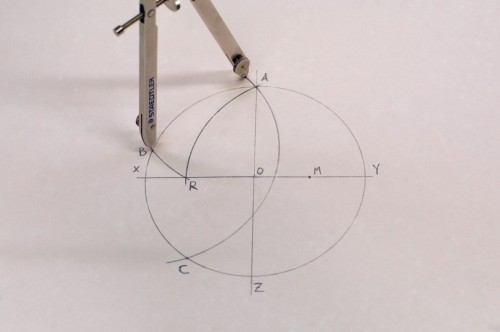
When you move the compass to pivot on B and draw an arc, it will cross the circle at two points: A and a new point “C”.

Returning your compass to A, draw an arc that crosses the right side of the circle to find “E”.
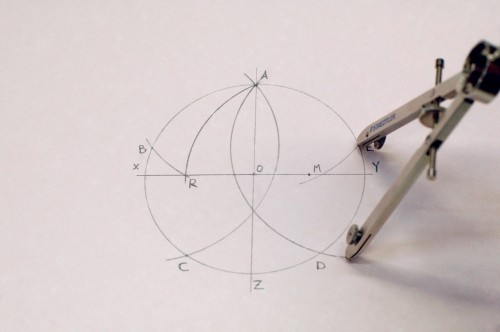
Move the compass to E and draw an arc to find “D”. In the picture above, I drew the arc so it crossed the circle twice, at point D and again at point A. You don’t need to actually do that.
To check that your pentagon has five equal sides, you can put the point of your compass on D. The pencil should touch C.
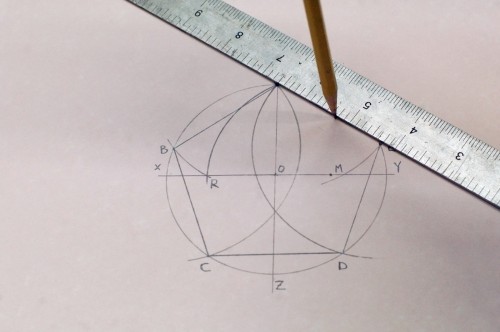
A, B, C, D and E are the corners of your pentagon. All that is left to do is connect them with a straight-edge. Presto! Perfect pentagons!

